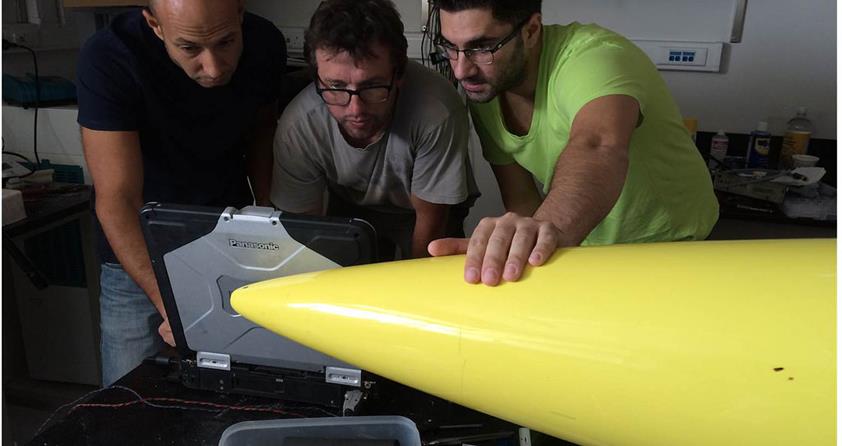An underwater glider is a type of autonomous underwater vehicle (AUV) that uses small changes in its buoyancy in conjunction with wings to convert vertical motion to horizontal, propelling itself forward while consuming very little power in the process. Gliders have been in use at KAUST since 2011, with the first two being purchased as part of Red Sea Research startup through Aramco. The Coastal and Marine Resources Core Lab have been supporting professor Burt Jones’ research of vastly unexplored Red Sea.
The operation of these gliders are carried out at the Coastal and Marine Resources Core Lab which includes running the logistics, (deployment and recovery) maintenance (replacing the batteries and repair) as well as the piloting. The data collected on these dives is transmitted to the scientists via satellite. To date our longest mission was more than 1000 dives but still required us to send a ship half way through to replace a fin at sea so we could keep it going.
Before deployment the glider spends a week in our facilities having batteries replaced followed by testing in our sub sea simulation lab where we subject the glider multiple times to the pressure equivalent of a 1000 meters under the sea. After this, our field team take the glider to a deep launch position off shore. While the team is out at sea, a pilot monitors the vehicles satellite communications from shore and after a few shallow test dives the pilot reviews the dive data and progressively dives the vehicle deeper until it’s clear that all is well.
The glider can stay at sea for 4 months if all goes well, and the recovery is much like the deployment with a shore team and field team. The field team will generally take another glider with them equipped with fresh batteries, launching the new glider first before initiating a recovery of other glider. When things go bad and they do, then a rescue mission is planned. We have had one shark attack in Al lith resulting in the antenna being bitten off and two more shark attacks in Duba that resulted in loss of wings.
There is a lot of work behind the scenes to keep gliders at sea, but as evidenced from our recent 1000 dive mission, one glider can capture as much data in one expedition, as was perviously collected in the history of the Red Sea.

